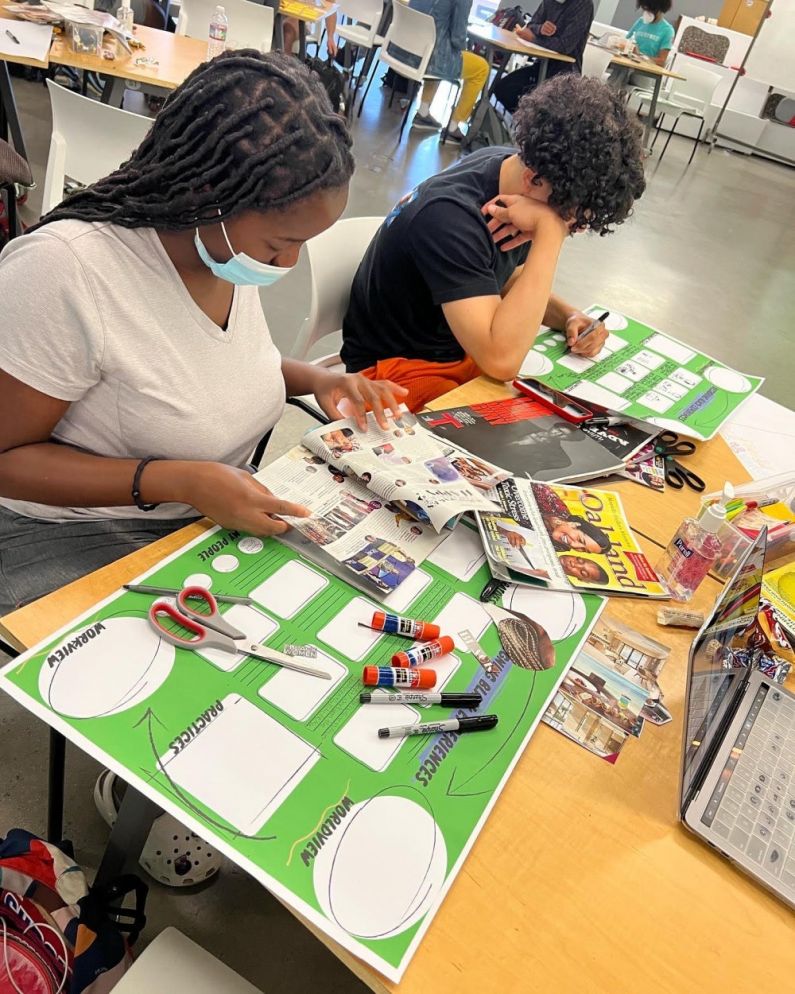Favour Nerrise’s academic experience has always focused on what her next step will be and how to get there.
“I don’t get time or space in the academic world to think about my Black narrative and how I want to live it,” said Nerrise, a Ph.D. student in Electrical Engineering.
A new course, Designing Black Experiences, has helped her consider these broader questions. She is one of two dozen students who took the course, which is open to both undergraduate, graduate, and professional students, in the spring. It is being offered again this year.
The class is built on design thinking principles, which look at how to design products centered on the human experience.
“This class takes a similar approach, except the product is the Black life experience,” Nerrise said. “You get to create different and new narratives about your life.”
The course grew out of the Life Design Lab, which houses the following classes: Designing Your Stanford, Designing Your Life, and Designing The Professional. They are taught by Shanice Webb, a lecturer and fellow at the Life Design Lab, and other fellows in the Life Design Lab. The murder of George Floyd in Minneapolis in 2020 was the impetus for creating this variation.
Space to design their lives

During spring 2022, students create storyboards charting three different versions of their future. (Image credit: Shanice Webb)
“I realized that Black students at Stanford need their own space to design their lives,” said Webb.
Webb and two co-lecturers led Designing Black Experiences last year: TJ Burnett, a student-athlete development advisor; and Arame Mbodj, associate director of Career Catalysts at Stanford Career Education.
As a culminating assignment, students in the course make storyboards charting three different versions of their future. When Nerrise created her storyboard, she started with the clearest path: continuing in academia and becoming a professor.
“That’s what I’ve been gearing up to do for a long time,” Nerrise said. “If that were not possible, lane 2 would probably be somewhere in public policy or tech law.”
She also mapped out a radically different path, one that she might choose if money were not an issue: living abroad and doing humanitarian projects like building schools. In considering these different visions, she realized that she may not need to choose just one.
“I don’t have to wait until I’m 40 or 50 to change or pivot,” Nerrise said. “I can incorporate elements of each lane starting now.”
The exercise helps students identify — and reframe — their fears about the future, and also consider how the different strands of their lives may work together.
For Patrick Fields, storyboarding provided a way to set goals for athletics, his professional life, and his community involvement.
“I look at it as three different phases of my life, but they’re all one life,” said Fields, a master’s degree student in Management Science and Engineering and a student-athlete on the football team. “They may take place in phases: Football will be with me for the next couple of years and then phase out.”
Finding community
The course has provided a place for students to discuss their experiences – from feelings of imposter syndrome to incidents of overt racism on campus — with others who face similar challenges.
“It’s been very interesting to hear how a lot of our students have felt imposter syndrome at Stanford, but also have been tokenized,” Burnett said.
The discussions provide students with the tools to overcome these challenges.
“There are systemic issues that affect Black people significantly more than other ethnic groups,” Fields said. “There are barriers I need to work around – how do I navigate this?”
For most of the students, the course was the first time they had been in a classroom – at Stanford or anywhere else – where the majority of the students looked like them.
“I never got to be in the majority in a class and share my experience in a way that I knew would be welcome,” Nerrise said.
The class is open to everyone, and last spring’s class has two students who do not identify as Black, whom Webb called “great allies and community members.” The Black students in the class come from a wide variety of backgrounds, as well.
“There is no one Black experience,” Mbodj said.
“There is nothing like this course on campus,” Nerrise said. “It’s a community, it’s a gathering, and you feel free to embrace being Black. You get to think about it critically, you get to challenge yourself about it, and you get to design your experience – whatever it may be.”